This is copy/pasted from my website. Therefore, there may be some formatting things that go awry when pasted here. Feel free to view the review natively on my site linked below. Otherwise, enjoy it here!
https://www.erinsaudiocorner.com/loudspeakers/donner_dyna3/
Donner Dyna 3 Powered Bookshelf Speaker
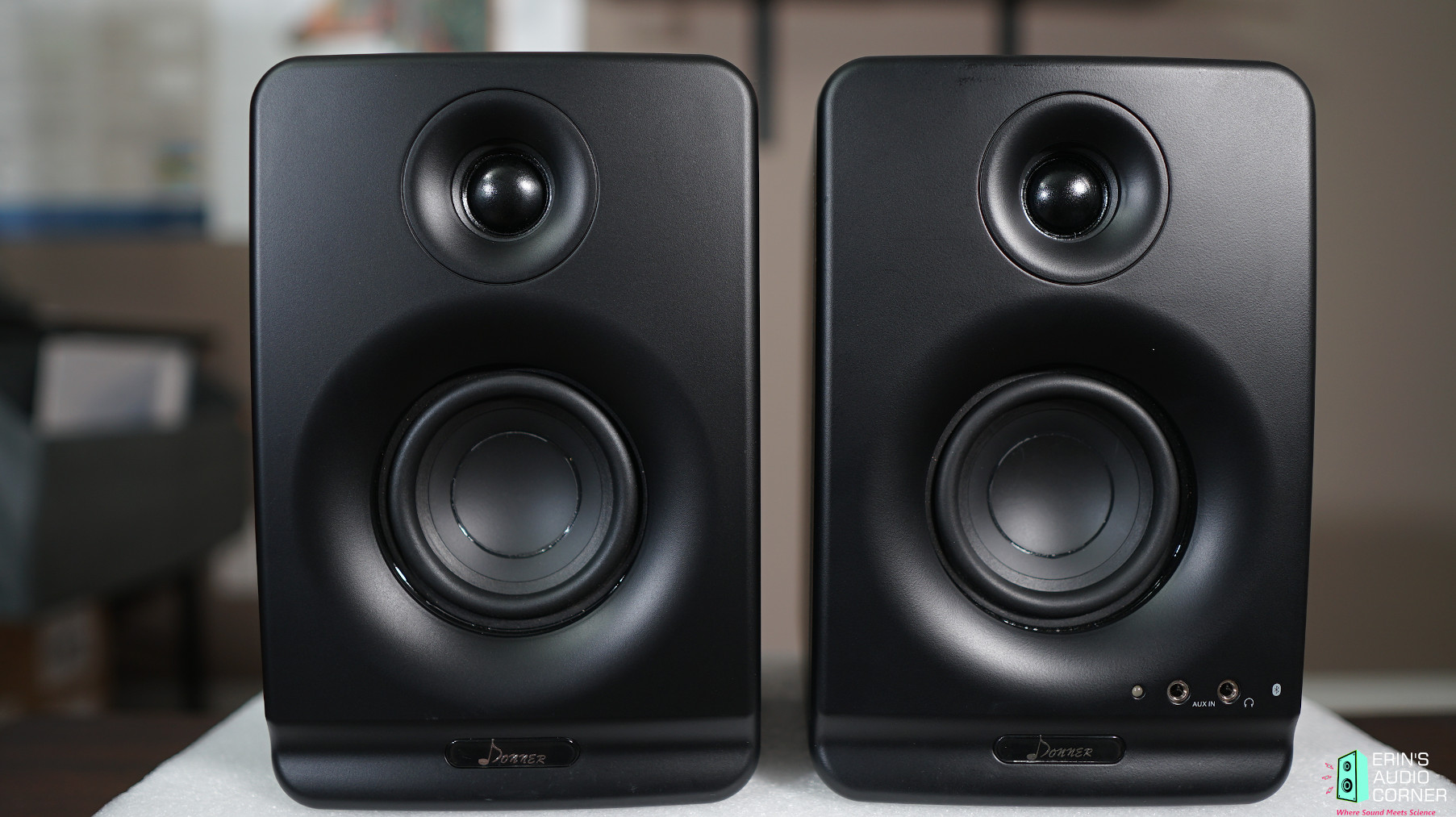
Foreword / YouTube Video Review
The review on this website is a brief overview and summary of the objective performance of this speaker. It is not intended to be a deep dive. Moreso, this is information for those who prefer “just the facts” and prefer to have the data without the filler.
However, for those who want more - a detailed explanation of the objective performance, and my subjective evaluation (what I heard, what I liked, etc.) - please watch the below video where I go more in-depth.
<<coming soon, maybe>>
Information and Photos
The Donner Dyna 3 is a powered 2-way Studio Monitor featuring a 3-inch midwoofer and 1-inch dome tweeter. It comes with a variety of hookup options (Bluetooth, TRS, 1/8-inch and RCA connections). A pair of isolation pads are also included.
The following is from the manufacturer:
Unfortunately, none of the above is really true. There is no accuracy in these speakers. They note the “1000 times acoustical measurements” but they failed to provide a response that is remotely neutral; something a studio monitor should logically be expected to possess.
MSRP is about $89 USD for a pair.

CTA-2034 (SPINORAMA) and Accompanying Data
All data collected using Klippel’s Near-Field Scanner. The Near-Field-Scanner 3D (NFS) offers a fully automated acoustic measurement of direct sound radiated from the source under test. The radiated sound is determined in any desired distance and angle in the 3D space outside the scanning surface. Directivity, sound power, SPL response and many more key figures are obtained for any kind of loudspeaker and audio system in near field applications (e.g. studio monitors, mobile devices) as well as far field applications (e.g. professional audio systems). Utilizing a minimum of measurement points, a comprehensive data set is generated containing the loudspeaker’s high resolution, free field sound radiation in the near and far field. For a detailed explanation of how the NFS works and the science behind it, please watch the below discussion with designer Christian Bellmann:
The reference plane in this test is at the tweeter, per the manufacturer. A single RCA input was used and the volume was set to 0.
Measurements are provided in a format in accordance with the Standard Method of Measurement for In-Home Loudspeakers (ANSI/CTA-2034-A R-2020). For more information, please see this link.
CTA-2034 / SPINORAMA:
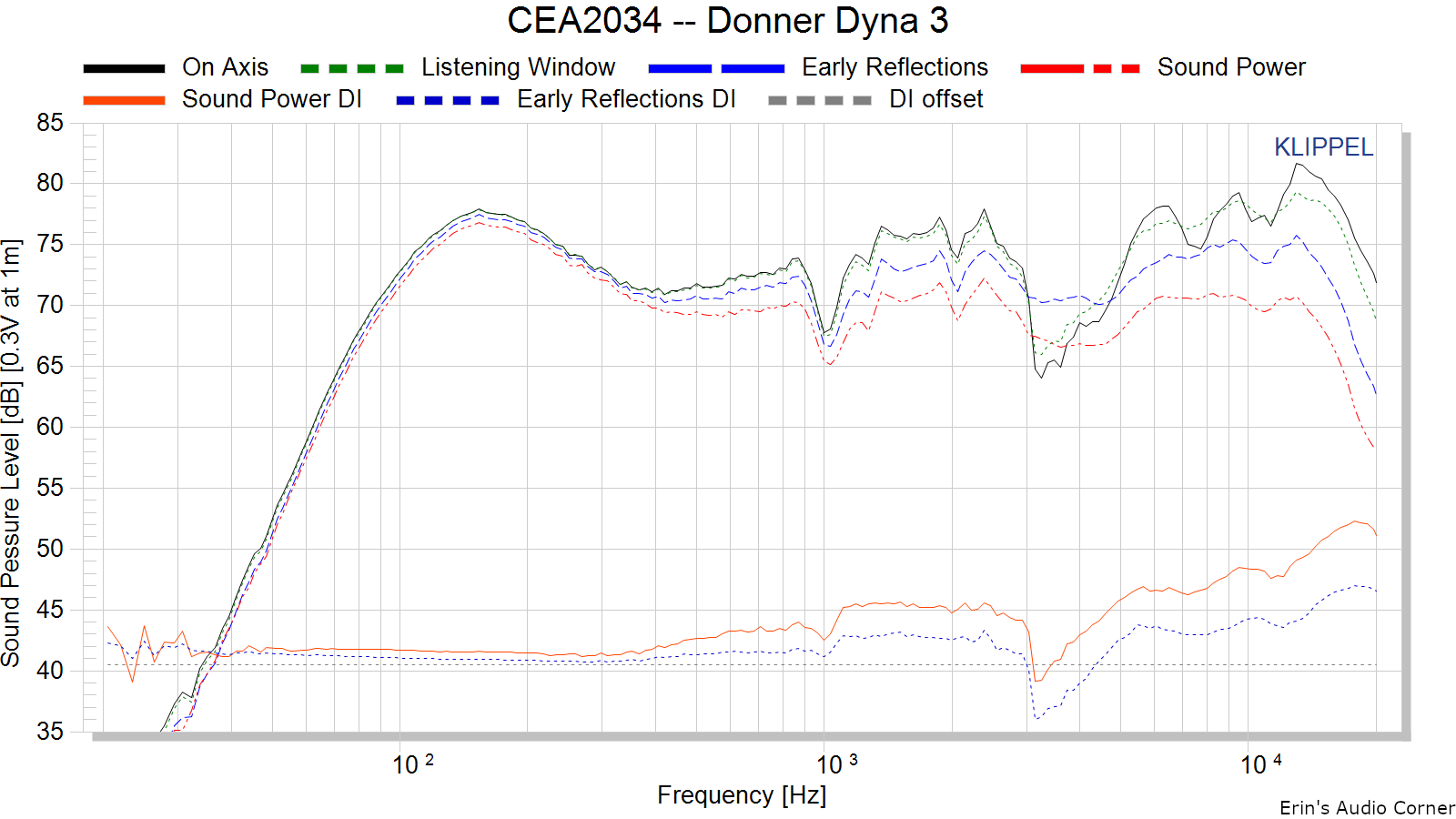
Early Reflections Breakout:
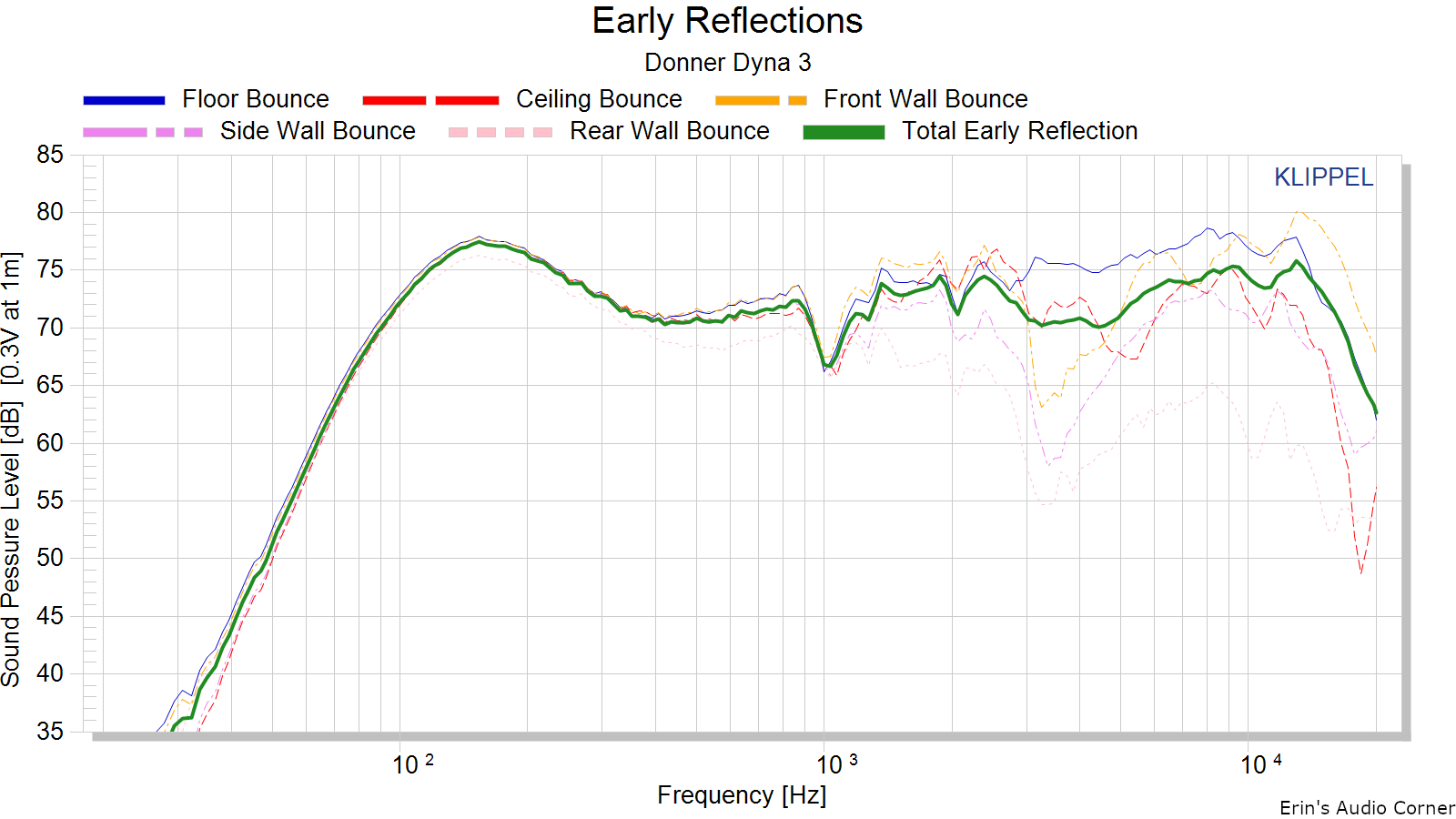
Estimated In-Room Response:

Horizontal Frequency Response (0° to ±90°):
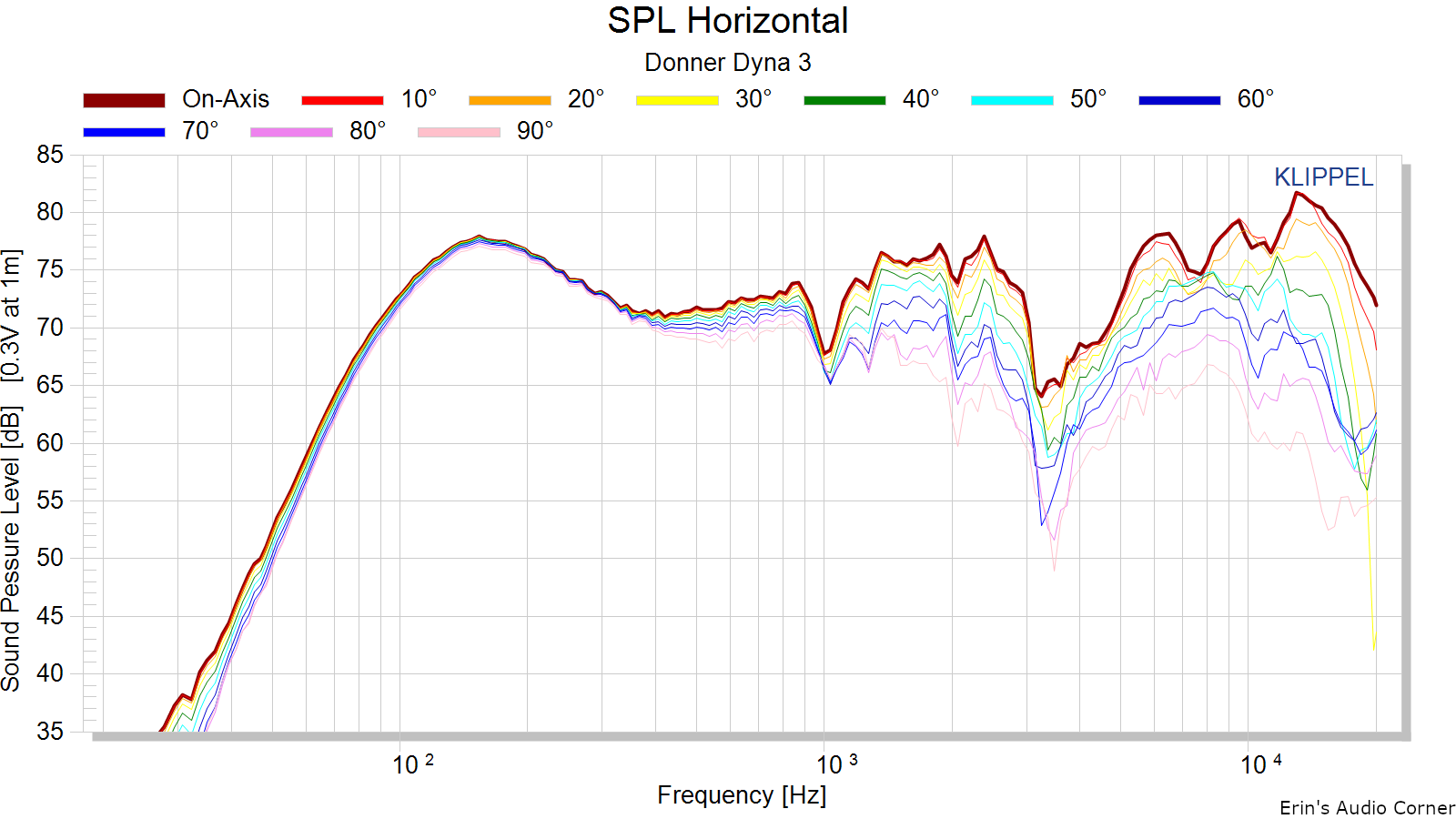
Vertical Frequency Response (0° to ±40°):
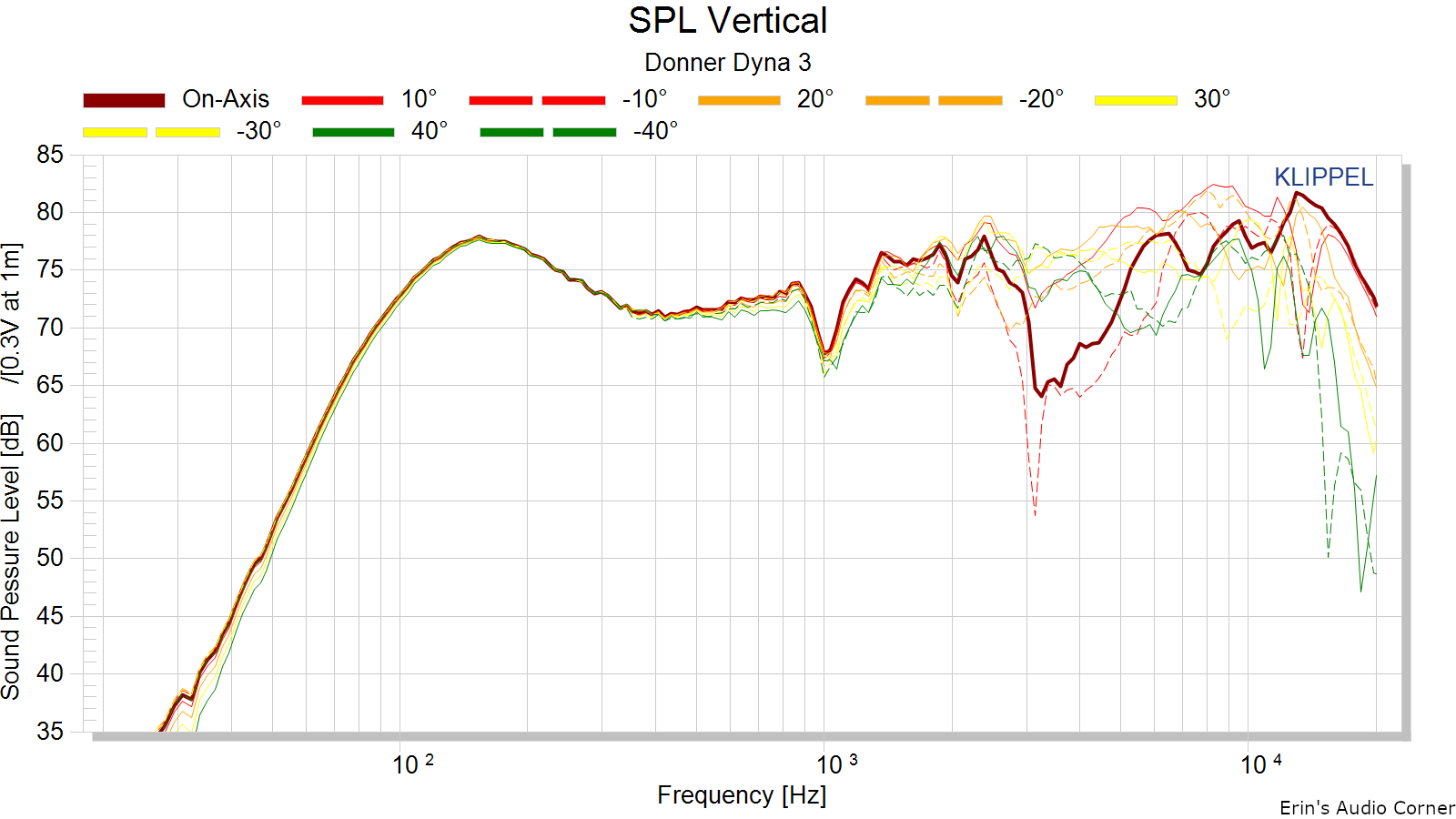
Horizontal Contour Plot (not normalized):
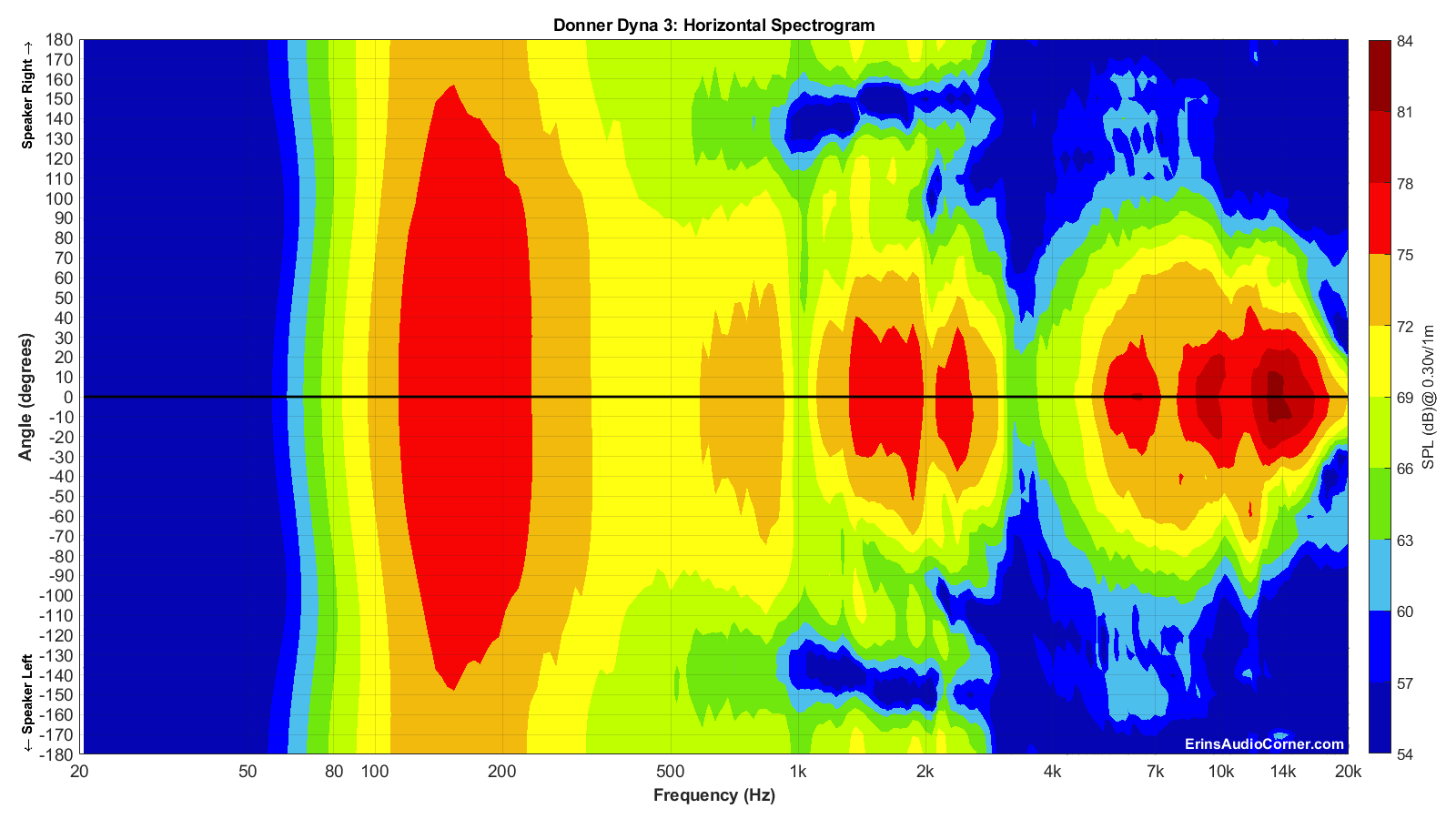
Horizontal Contour Plot (normalized):
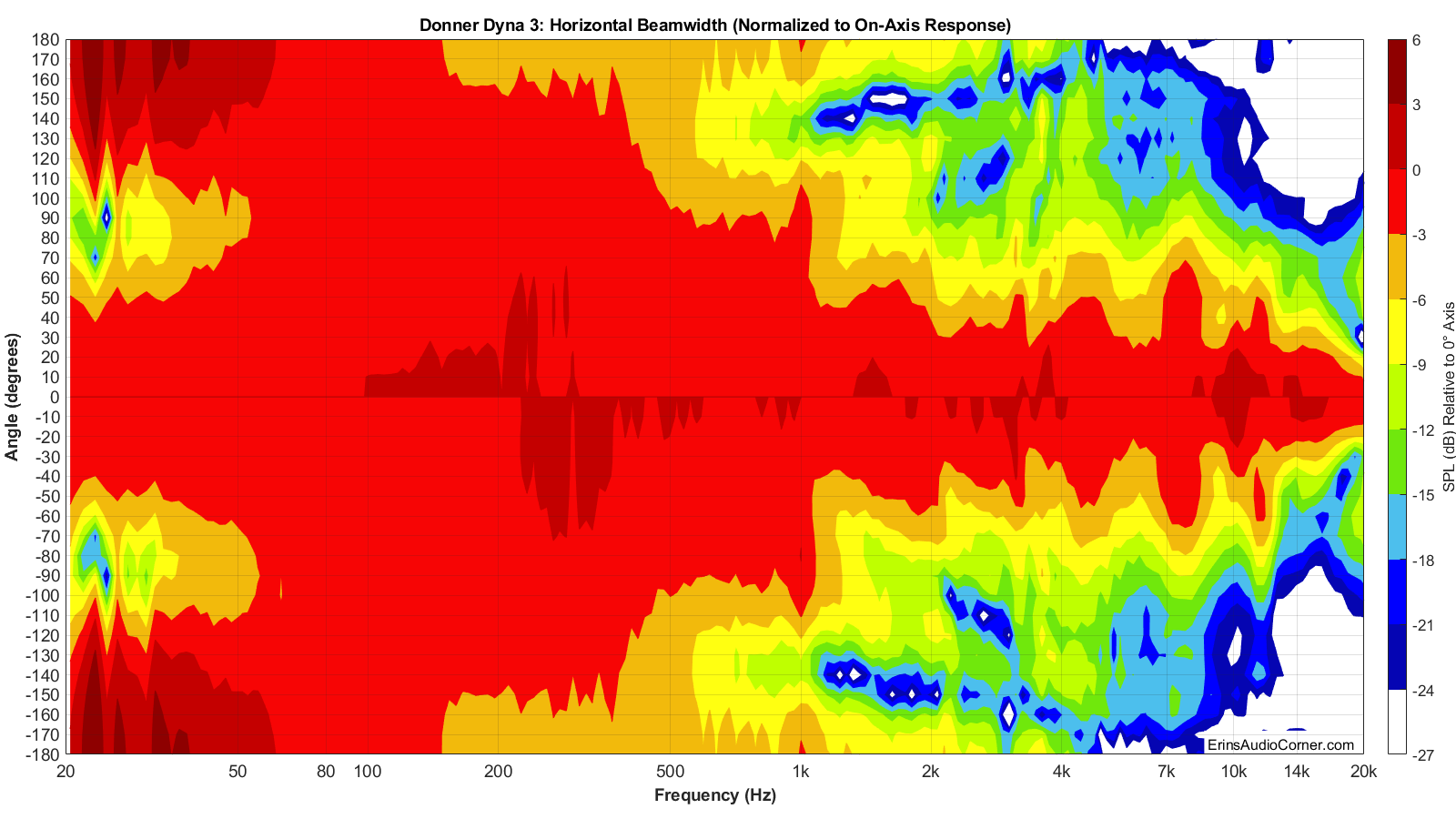
Vertical Contour Plot (not normalized):

Vertical Contour Plot (normalized):
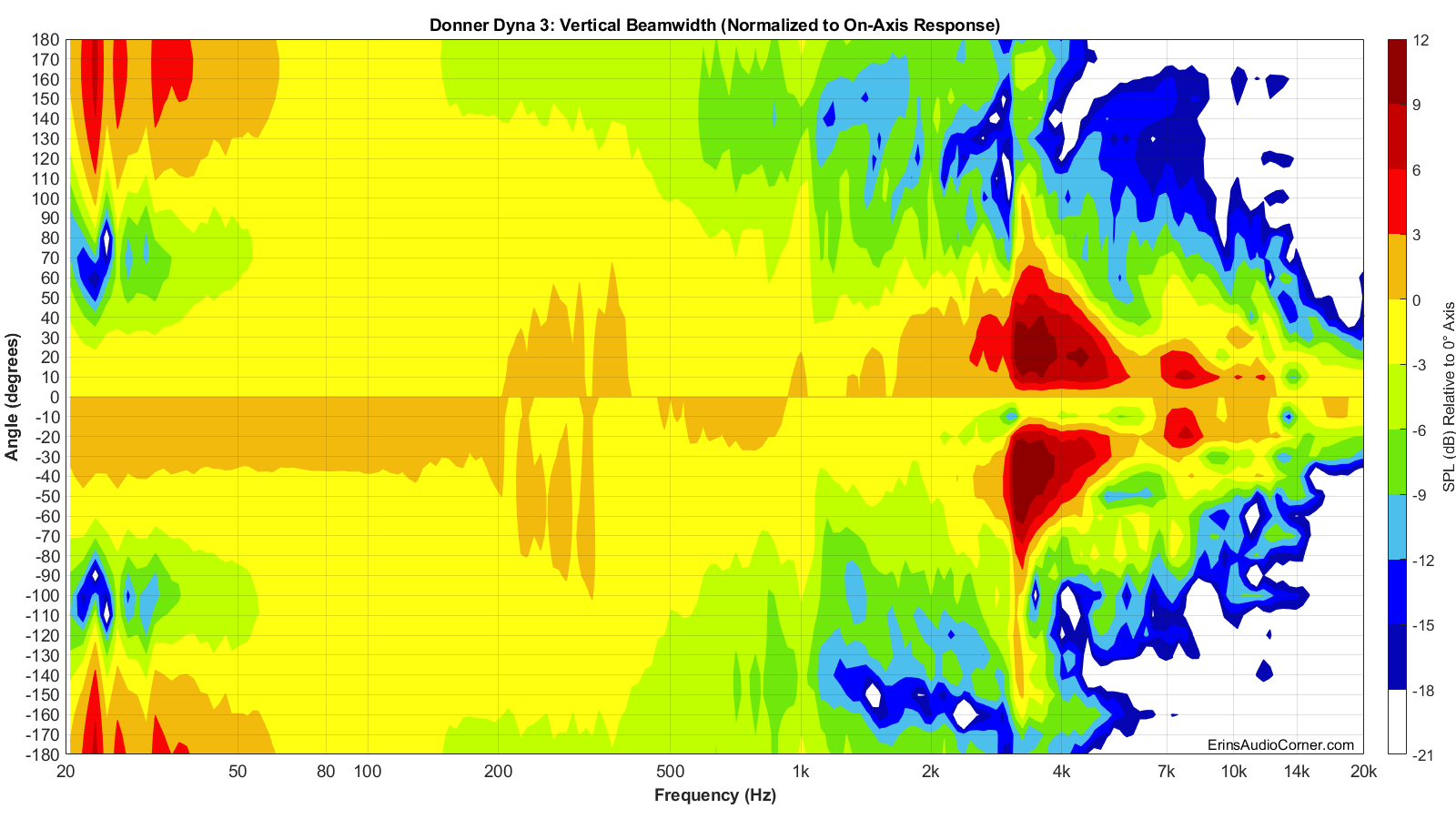
Additional Measurements
On-Axis Response Linearity
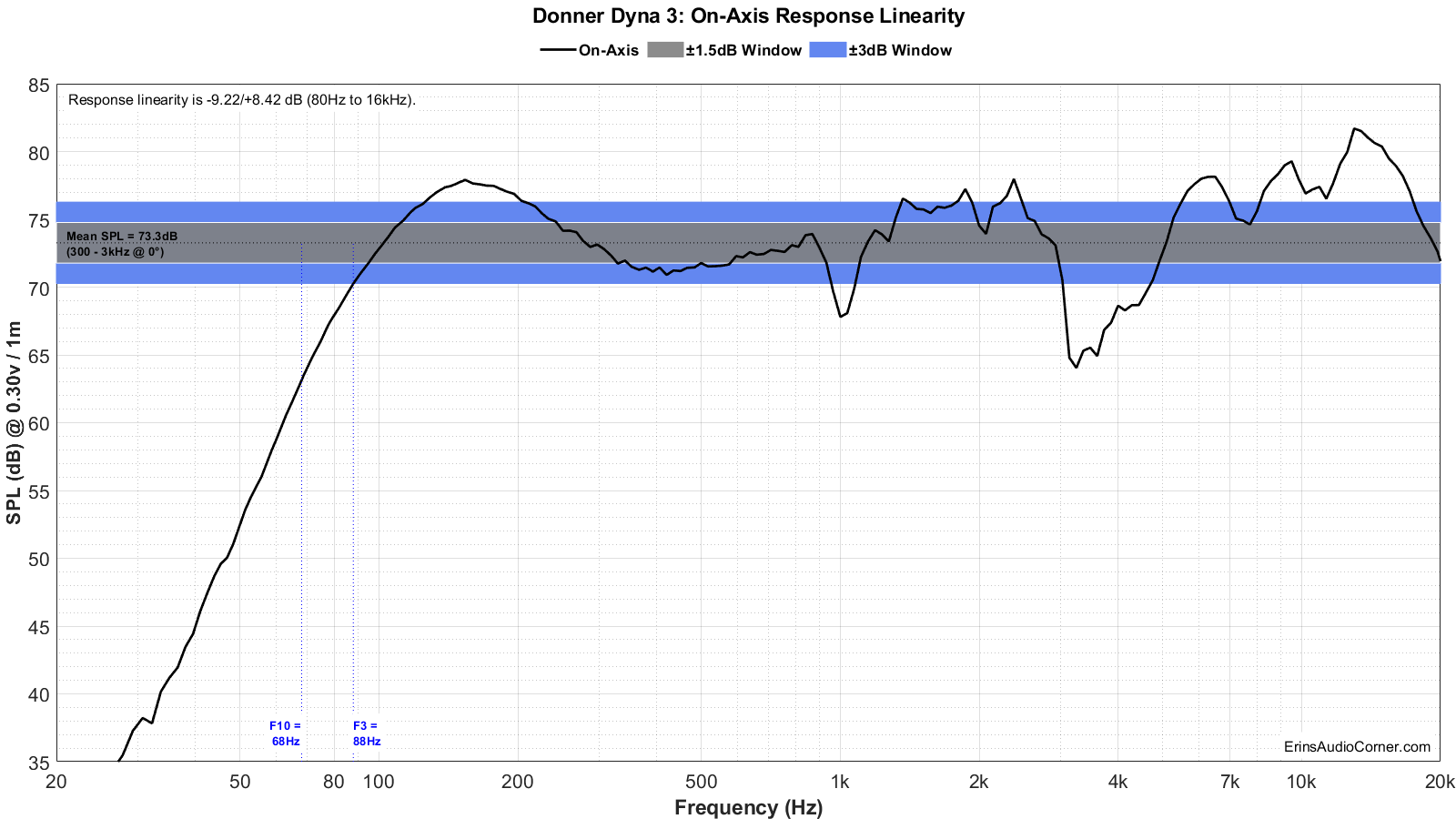
“Globe” Plots
These plots are generated from exporting the Klippel data to text files. I then process that data with my own MATLAB script to provide what you see. These are not part of any software packages and are unique to my tests.
Horizontal Polar (Globe) Plot:
This represents the sound field at 2 meters - above 200Hz - per the legend in the upper left.
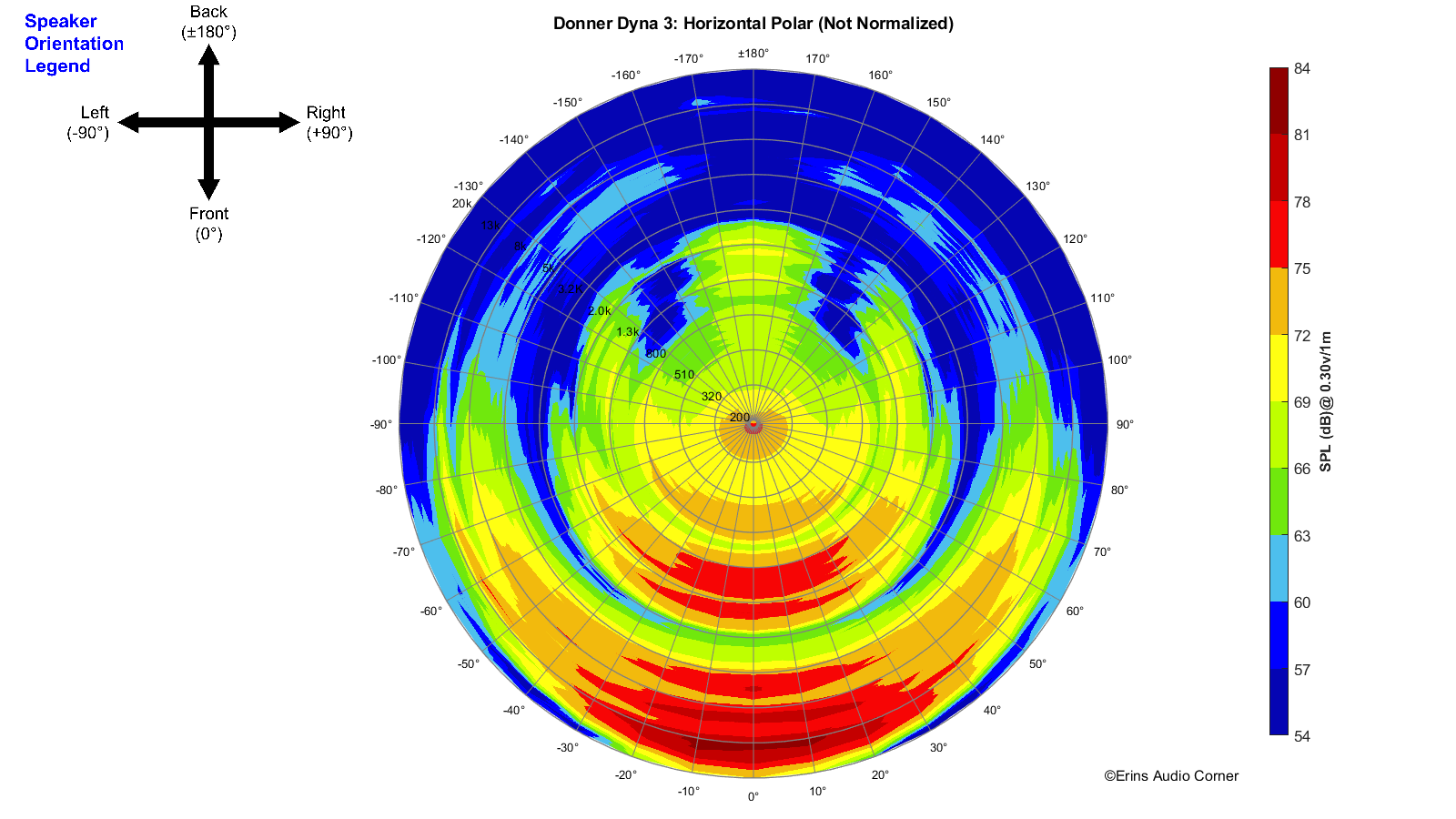
Vertical Polar (Globe) Plot:
This represents the sound field at 2 meters - above 200Hz - per the legend in the upper left.
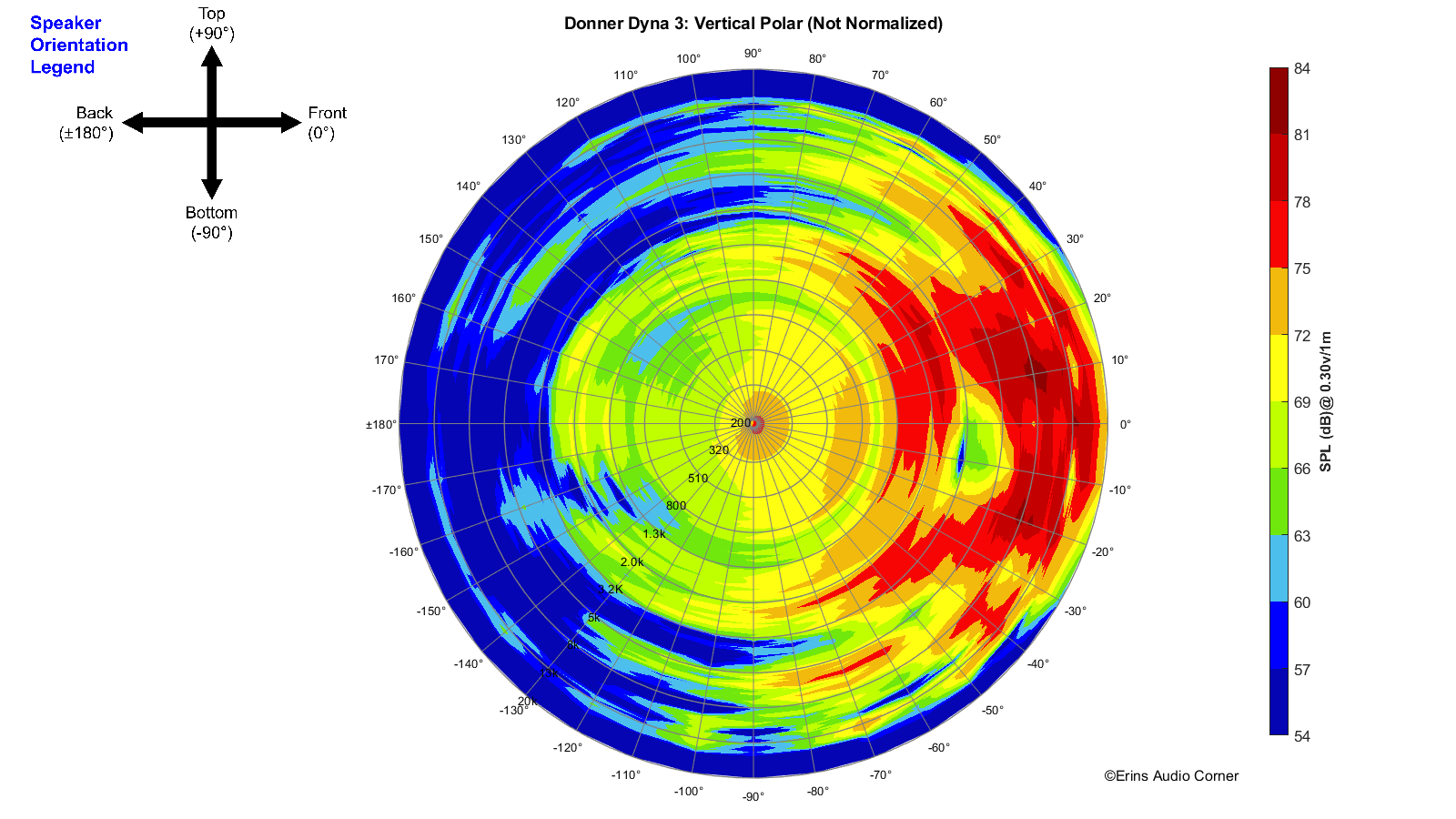
Harmonic Distortion
Harmonic Distortion at 86dB @ 1m:

Harmonic Distortion at 96dB @ 1m:
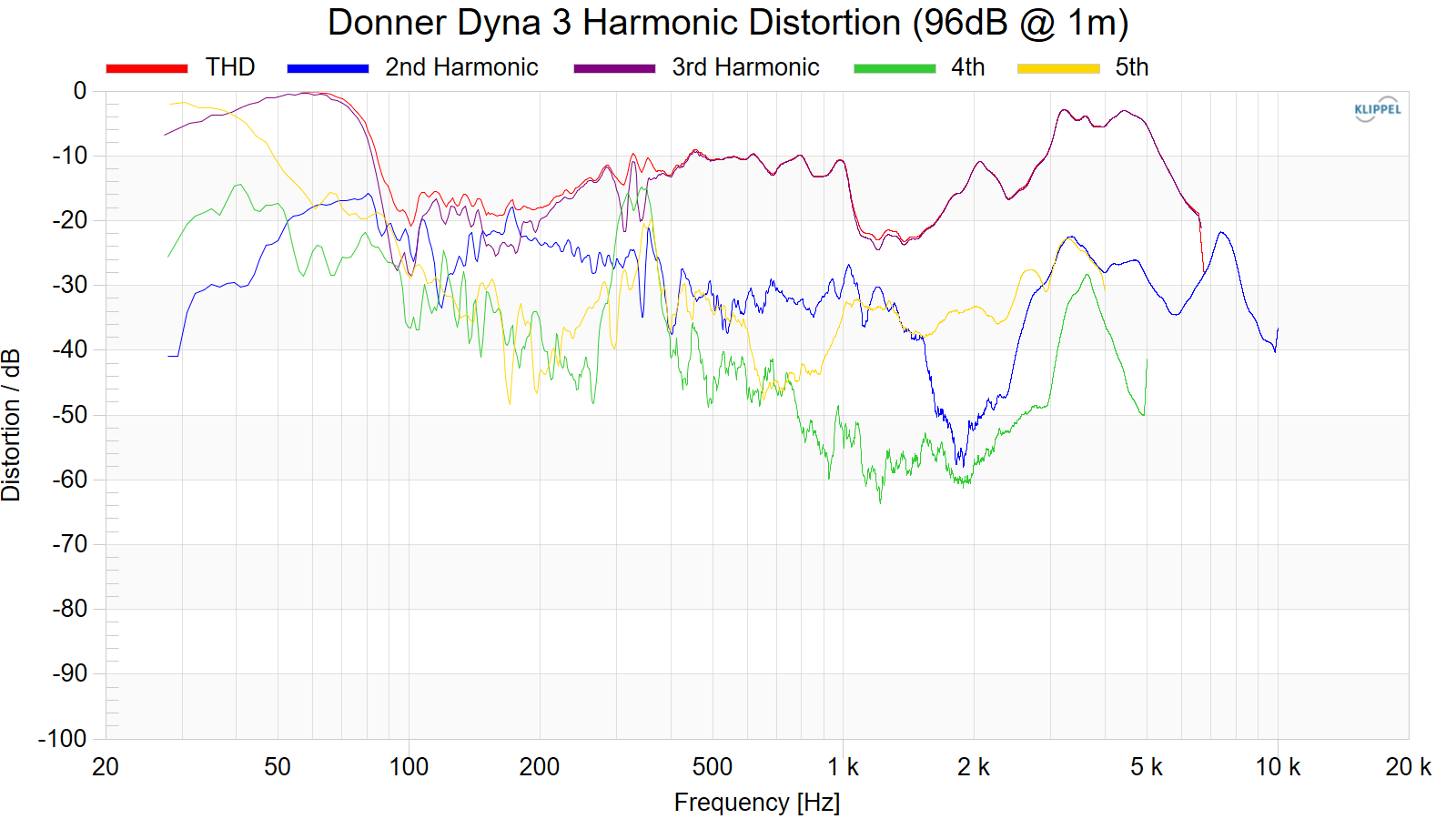
Near-Field Response
Nearfield response of individual drive units:
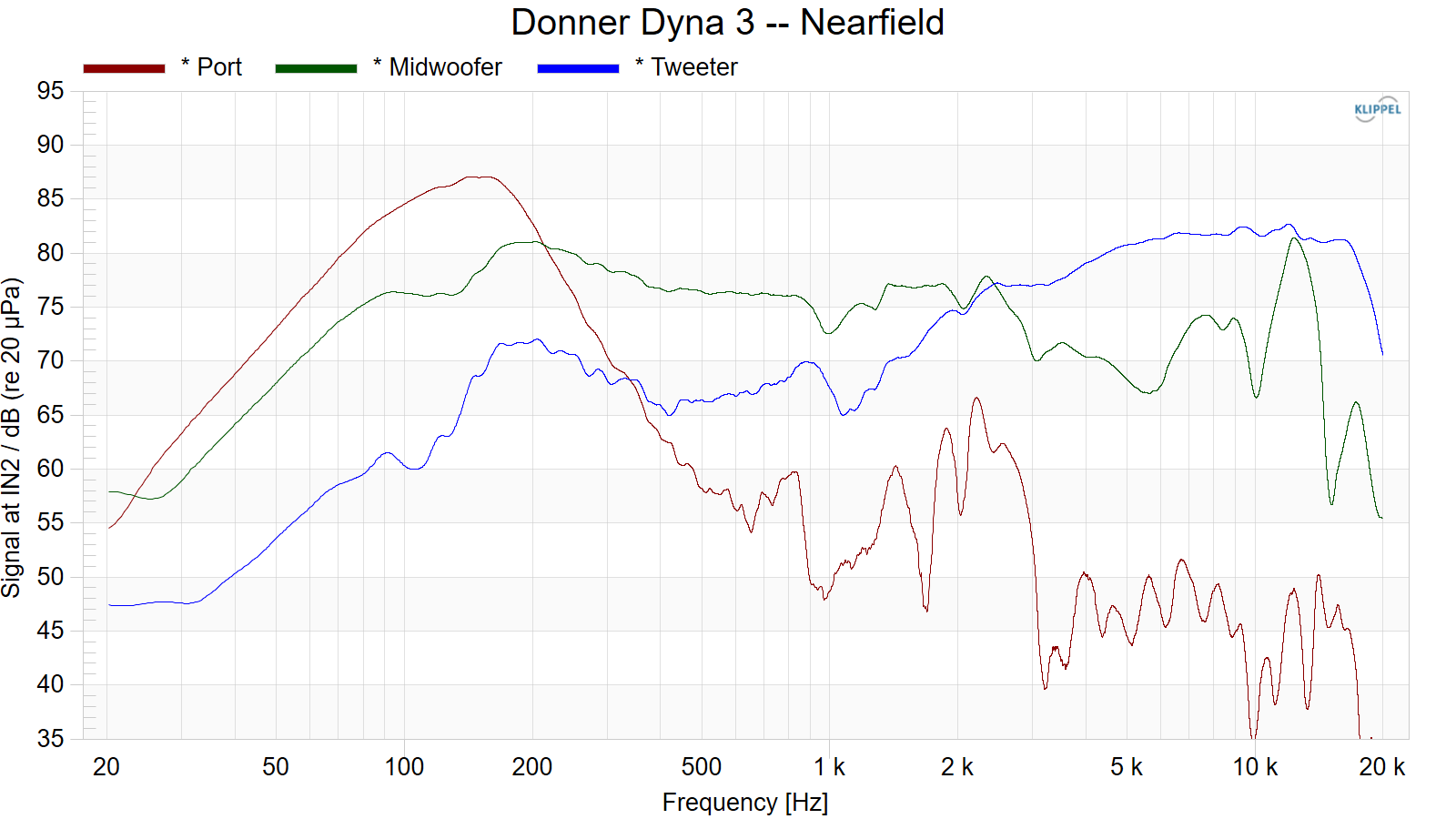
Dynamic Range (Instantaneous Compression Test)
The below graphic indicates just how much SPL is lost (compression) or gained (enhancement; usually due to distortion) when the speaker is played at higher output volumes instantly via a 2.7 second logarithmic sine sweep referenced to 76dB at 1 meter. The signals are played consecutively without any additional stimulus applied. Then normalized against the 76dB result.
The tests are conducted in this fashion:
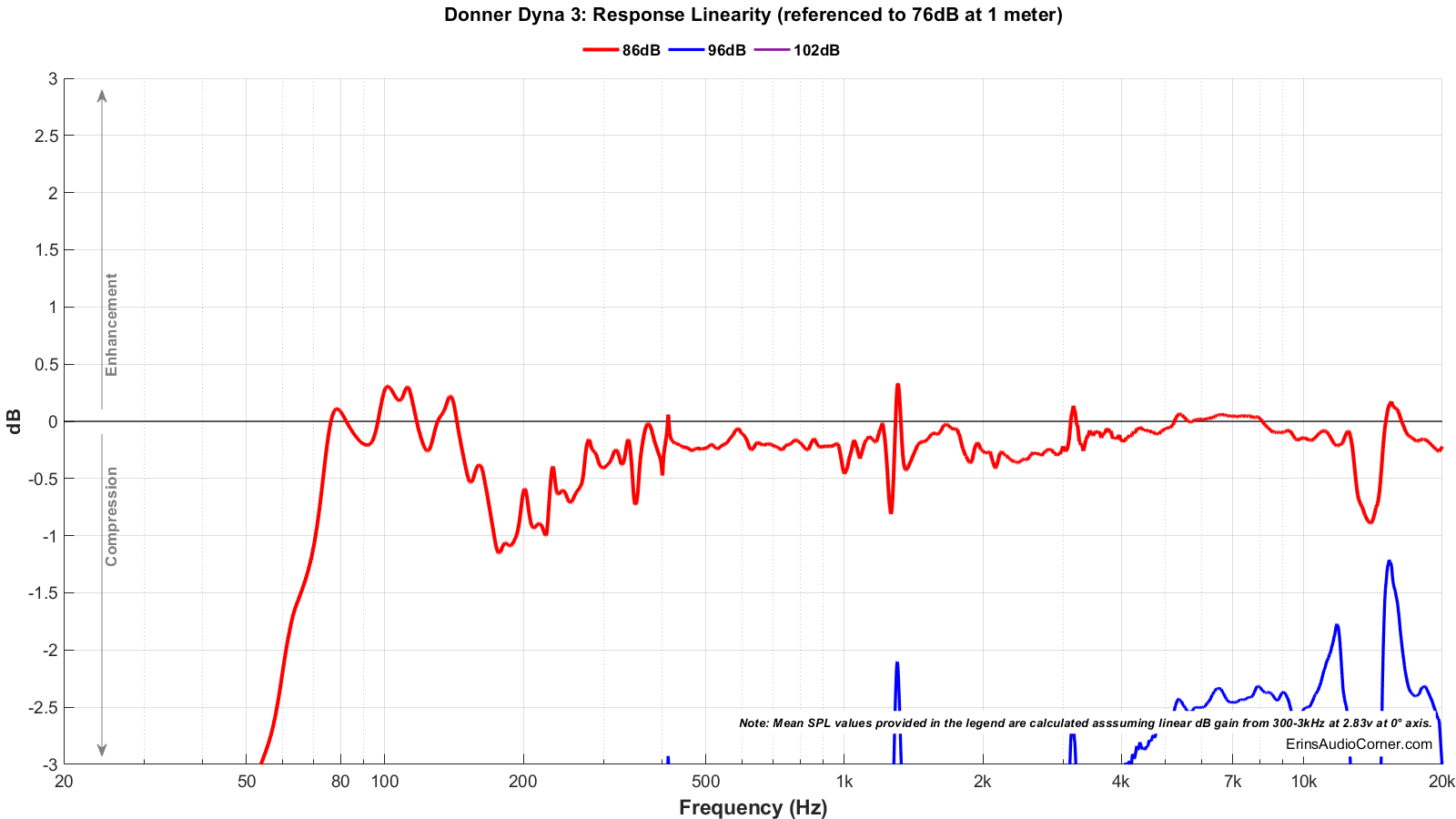
Based on my results above, it is obvious the output is limited significantly above the 86dB @ 1m output level. These will obviously need to be listened at low-to-mid volume in the nearfield (which is reasonably expected with such a small monitor).
Long Term Compression Tests
The below graphics indicate how much SPL is lost or gained in the long-term as a speaker plays at the same output level for 2 minutes, in intervals. Each graphic represents a different SPL: 86dB and 96dB both at 1 meter.
The purpose of this test is to illustrate how much (if at all) the output changes as a speaker’s components temperature increases (i.e., voice coils, crossover components).
The tests are conducted in this fashion:

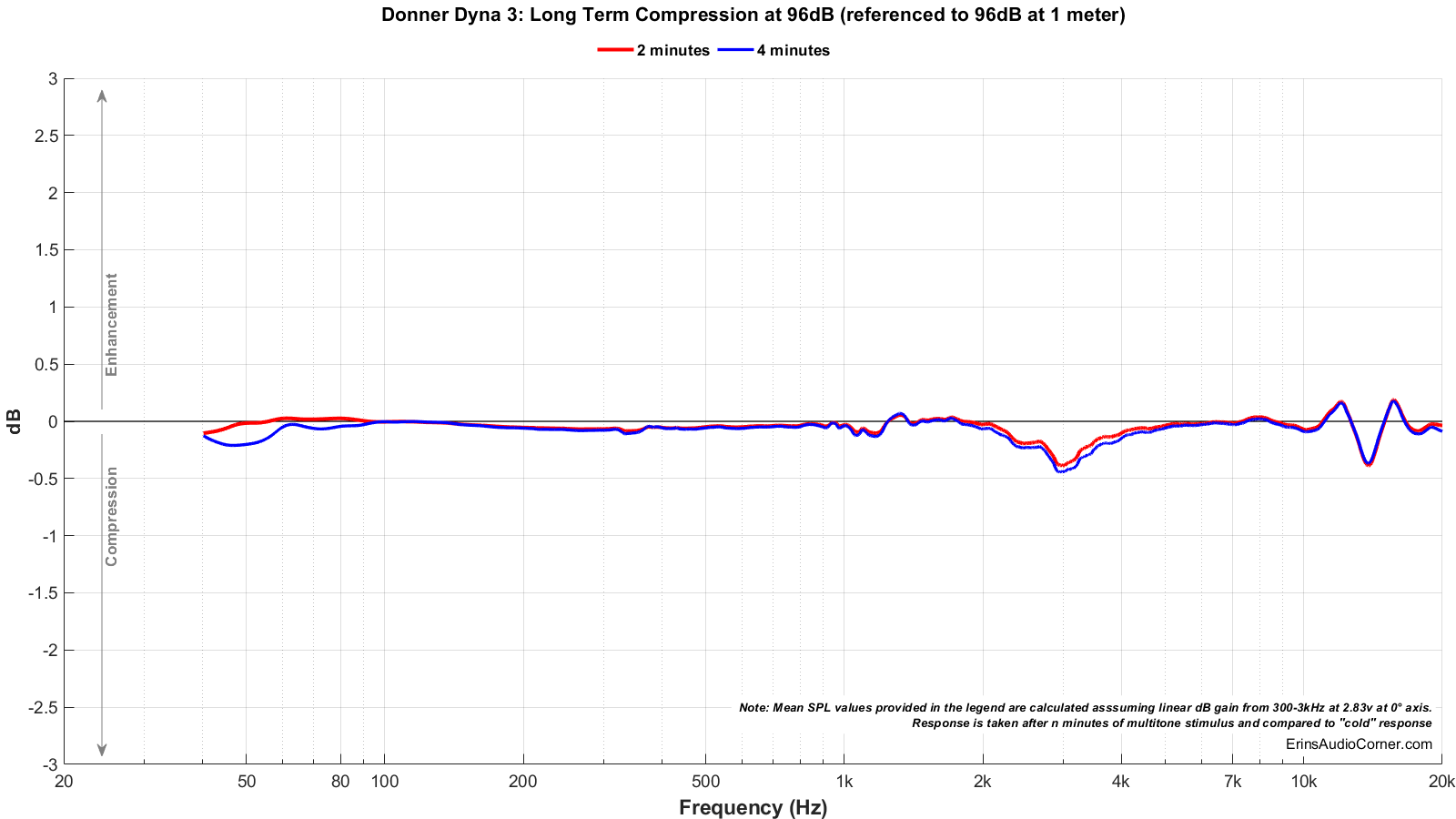
Parting / Random Thoughts
These are the worst speakers I have tested in regard to linearity. Frankly, it aggravates me the manufacturer would make the claims they do about “accuracy” while putting out such a terrible product. The Mackie CR3-X and PreSonus Eris E3.5 I recently tested are better than this speaker and neither of those are really good, either. At this point, I’ll recommend the Neumi BS5P if you can fit them and follow my suggestion of sealing the ports.
Do not waste your money on these speakers.
Support / Donate
If you like what you see here and want to help me keep it going, please consider donating via the PayPal Contribute link here. Donations help me pay for new items to test, hardware, miscellaneous items and costs of the site’s server space and bandwidth. All of which I otherwise pay out of pocket. So, if you can help chip in a few bucks, know that it is very much appreciated. Alternatively, you can use the affiliate link on my site if you want to purchase these.
You can also join my Facebook and YouTube pages if you would like to follow along with updates.
https://www.erinsaudiocorner.com/loudspeakers/donner_dyna3/
Donner Dyna 3 Powered Bookshelf Speaker
- Tuesday, May 18, 2021
Foreword / YouTube Video Review
The review on this website is a brief overview and summary of the objective performance of this speaker. It is not intended to be a deep dive. Moreso, this is information for those who prefer “just the facts” and prefer to have the data without the filler.
However, for those who want more - a detailed explanation of the objective performance, and my subjective evaluation (what I heard, what I liked, etc.) - please watch the below video where I go more in-depth.
<<coming soon, maybe>>
Information and Photos
The Donner Dyna 3 is a powered 2-way Studio Monitor featuring a 3-inch midwoofer and 1-inch dome tweeter. It comes with a variety of hookup options (Bluetooth, TRS, 1/8-inch and RCA connections). A pair of isolation pads are also included.
The following is from the manufacturer:
Dyna Series Dyna3/Dyna4 High-Definition Active Studio Monitors take the requirements of accurate frequency response, precise acoustic field, high-quality components, professional acoustic adjusters, and speakers for studio into an ultra-compact that can be placed in any context of use. With more than 1,000 times acoustical measurements and data in plenty of rooms and professionally design acoustic adjusters, Dyna series high-definition active studio monitors make sure that give you the accurate and correct sound of music.
Unfortunately, none of the above is really true. There is no accuracy in these speakers. They note the “1000 times acoustical measurements” but they failed to provide a response that is remotely neutral; something a studio monitor should logically be expected to possess.
MSRP is about $89 USD for a pair.
CTA-2034 (SPINORAMA) and Accompanying Data
All data collected using Klippel’s Near-Field Scanner. The Near-Field-Scanner 3D (NFS) offers a fully automated acoustic measurement of direct sound radiated from the source under test. The radiated sound is determined in any desired distance and angle in the 3D space outside the scanning surface. Directivity, sound power, SPL response and many more key figures are obtained for any kind of loudspeaker and audio system in near field applications (e.g. studio monitors, mobile devices) as well as far field applications (e.g. professional audio systems). Utilizing a minimum of measurement points, a comprehensive data set is generated containing the loudspeaker’s high resolution, free field sound radiation in the near and far field. For a detailed explanation of how the NFS works and the science behind it, please watch the below discussion with designer Christian Bellmann:
The reference plane in this test is at the tweeter, per the manufacturer. A single RCA input was used and the volume was set to 0.
Measurements are provided in a format in accordance with the Standard Method of Measurement for In-Home Loudspeakers (ANSI/CTA-2034-A R-2020). For more information, please see this link.
CTA-2034 / SPINORAMA:

Early Reflections Breakout:

Estimated In-Room Response:

Horizontal Frequency Response (0° to ±90°):

Vertical Frequency Response (0° to ±40°):

Horizontal Contour Plot (not normalized):

Horizontal Contour Plot (normalized):

Vertical Contour Plot (not normalized):

Vertical Contour Plot (normalized):

Additional Measurements
On-Axis Response Linearity

“Globe” Plots
These plots are generated from exporting the Klippel data to text files. I then process that data with my own MATLAB script to provide what you see. These are not part of any software packages and are unique to my tests.
Horizontal Polar (Globe) Plot:
This represents the sound field at 2 meters - above 200Hz - per the legend in the upper left.

Vertical Polar (Globe) Plot:
This represents the sound field at 2 meters - above 200Hz - per the legend in the upper left.

Harmonic Distortion
Harmonic Distortion at 86dB @ 1m:

Harmonic Distortion at 96dB @ 1m:

Near-Field Response
Nearfield response of individual drive units:

Dynamic Range (Instantaneous Compression Test)
The below graphic indicates just how much SPL is lost (compression) or gained (enhancement; usually due to distortion) when the speaker is played at higher output volumes instantly via a 2.7 second logarithmic sine sweep referenced to 76dB at 1 meter. The signals are played consecutively without any additional stimulus applied. Then normalized against the 76dB result.
The tests are conducted in this fashion:
- 76dB at 1 meter (baseline; black)
- 86dB at 1 meter (red)
- 96dB at 1 meter (blue)
- 102dB at 1 meter (purple)

Based on my results above, it is obvious the output is limited significantly above the 86dB @ 1m output level. These will obviously need to be listened at low-to-mid volume in the nearfield (which is reasonably expected with such a small monitor).
Long Term Compression Tests
The below graphics indicate how much SPL is lost or gained in the long-term as a speaker plays at the same output level for 2 minutes, in intervals. Each graphic represents a different SPL: 86dB and 96dB both at 1 meter.
The purpose of this test is to illustrate how much (if at all) the output changes as a speaker’s components temperature increases (i.e., voice coils, crossover components).
The tests are conducted in this fashion:
- “Cold” logarithmic sine sweep (no stimulus applied beforehand)
- Multitone stimulus played at desired SPL/distance for 2 minutes; intended to represent music signal
- Interim logarithmic sine sweep (no stimulus applied beforehand) (Red in graphic)
- Multitone stimulus played at desired SPL/distance for 2 minutes; intended to represent music signal
- Final logarithmic sine sweep (no stimulus applied beforehand) (Blue in graphic)


Parting / Random Thoughts
These are the worst speakers I have tested in regard to linearity. Frankly, it aggravates me the manufacturer would make the claims they do about “accuracy” while putting out such a terrible product. The Mackie CR3-X and PreSonus Eris E3.5 I recently tested are better than this speaker and neither of those are really good, either. At this point, I’ll recommend the Neumi BS5P if you can fit them and follow my suggestion of sealing the ports.
Do not waste your money on these speakers.
Support / Donate
If you like what you see here and want to help me keep it going, please consider donating via the PayPal Contribute link here. Donations help me pay for new items to test, hardware, miscellaneous items and costs of the site’s server space and bandwidth. All of which I otherwise pay out of pocket. So, if you can help chip in a few bucks, know that it is very much appreciated. Alternatively, you can use the affiliate link on my site if you want to purchase these.
You can also join my Facebook and YouTube pages if you would like to follow along with updates.
Last edited:












